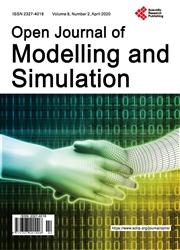Modeling the Nigerian Bonny Light Crude Oil Price: The Power of Fuzzy Time Series
引用次数: 2
Abstract
Several authors have used different classical statistical models to fit the Nigerian Bonny Light crude oil price but the application of machine learning models and Fuzzy Time Series model on the crude oil price has been grossly understudied. Therefore, in this study, a classical statistical model—Autoregressive Integrated Moving Average (ARIMA), two machine learning models—Artificial Neural Network (ANN) and Random Forest (RF) and Fuzzy Time Series (FTS) Model were compared in modeling the Nigerian Bonny Light crude oil price data for the periods from January, 2006 to December, 2020. The monthly secondary data were collected from the Nigerian National Petroleum Corporation (NNPC) and Reuters website and divided into train (70%) and test (30%) sets. The train set was used in building the models and the models were validated using the test set. The performance measures used for the comparison include: The modified Diebold-Mariano test, the Root Mean Square Error (RMSE), the Mean Absolute Percentage Error (MAPE) and Nash-Sutcliffe Efficiency (NSE) values. Based on the performance measures, ANN (4, 1, 1) and RF performed better than ARIMA (1, 1, 0) model but FTS model using Chen’s algorithm outperformed every other model. The results recommend the use of FTS model for forecasting future values of the Nigerian Bonny Light Crude oil. However, a hybrid model of ARIMA-ANN or ARIMA-RF should be built and compared with Chen’s algorithm FTS model for the same data set to further verify the power of FTS model using Chen’s algorithm.尼日利亚邦尼轻质原油价格建模:模糊时间序列的力量
几位作者使用了不同的经典统计模型来拟合尼日利亚邦尼轻质原油价格,但机器学习模型和模糊时间序列模型在原油价格上的应用研究严重不足。因此,在本研究中,在对2006年1月至2020年12月尼日利亚邦尼轻质原油价格数据建模时,比较了经典统计模型——自回归综合移动平均值(ARIMA)、两种机器学习模型——人工神经网络(ANN)和随机森林(RF)以及模糊时间序列(FTS)模型。每月的二次数据来自尼日利亚国家石油公司(NNPC)和路透社网站,分为训练集(70%)和测试集(30%)。在建立模型时使用了训练集,并使用测试集对模型进行了验证。用于比较的性能指标包括:修正的Diebold Mariano检验、均方根误差(RMSE)、平均绝对百分比误差(MAPE)和Nash-Sutcliffe效率(NSE)值。基于性能测量,ANN(4,1,1)和RF的性能优于ARIMA(1,1,0)模型,但使用Chen算法的FTS模型的性能优于其他模型。研究结果建议使用FTS模型预测尼日利亚邦尼轻质原油的未来价值。然而,对于相同的数据集,应该建立ARIMA-ANN或ARIMA-RF的混合模型,并与Chen的算法FTS模型进行比较,以进一步验证使用Chen算法的FTS模型的功效。
本文章由计算机程序翻译,如有差异,请以英文原文为准。
求助全文
约1分钟内获得全文
求助全文

 求助内容:
求助内容: 应助结果提醒方式:
应助结果提醒方式:


